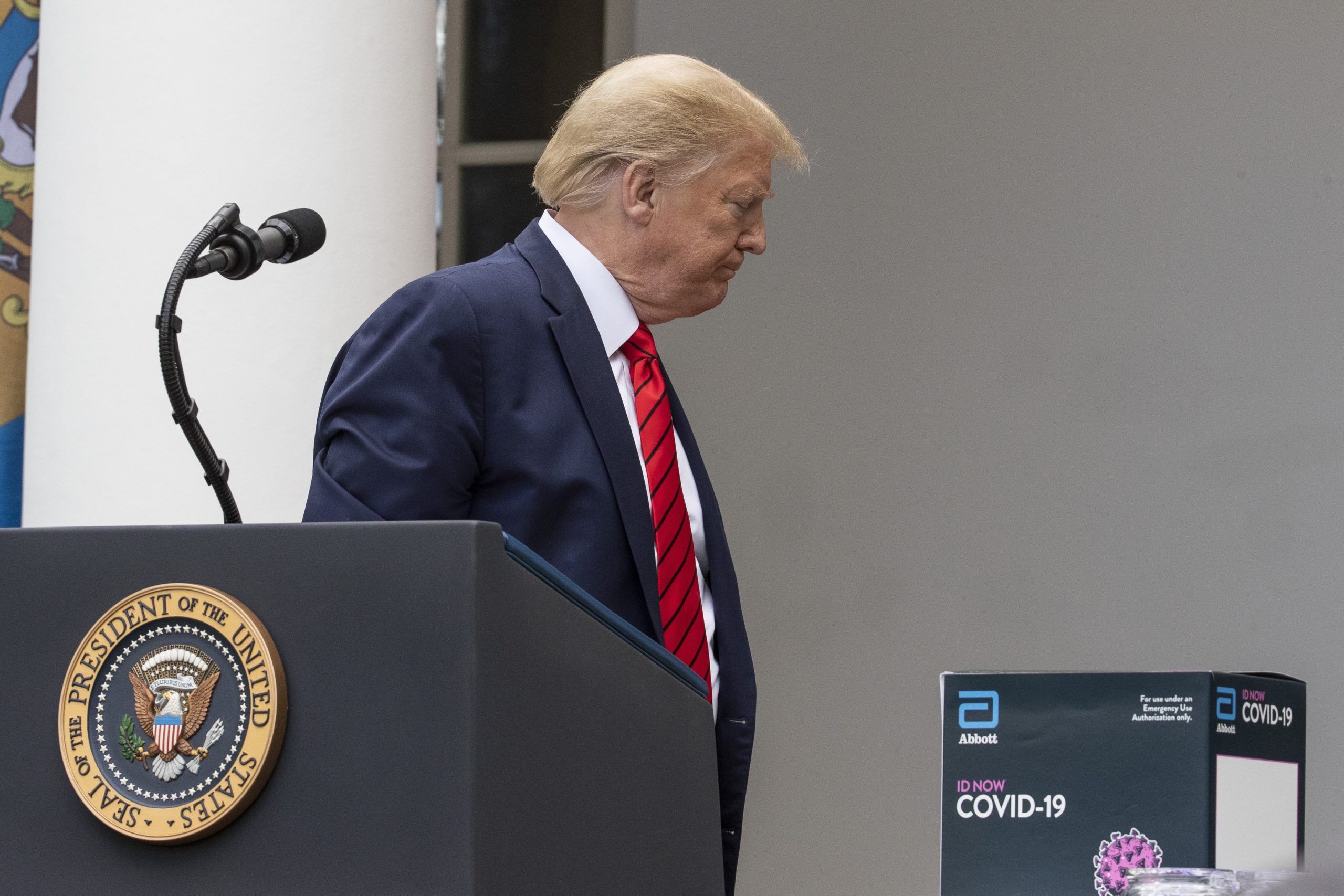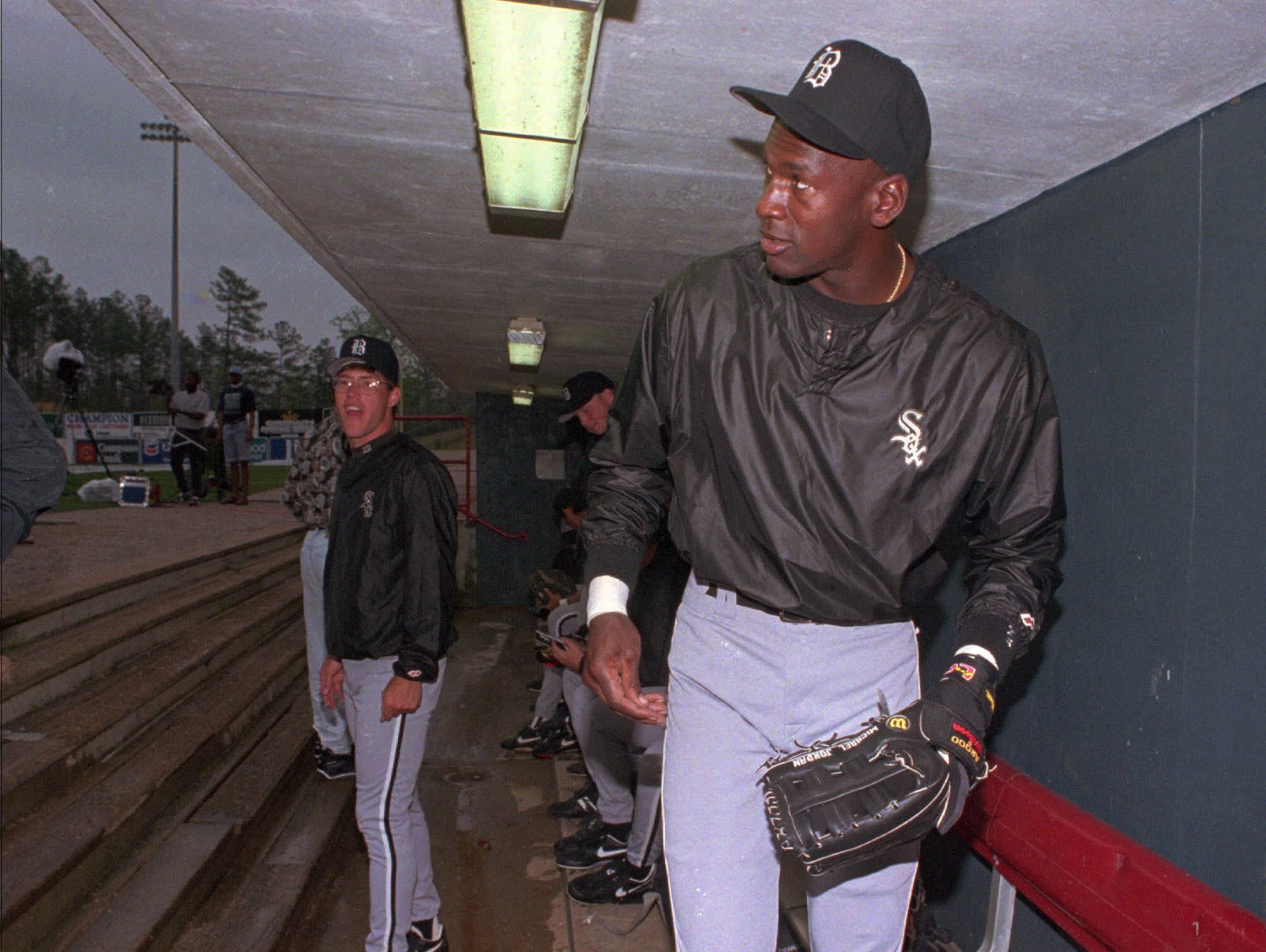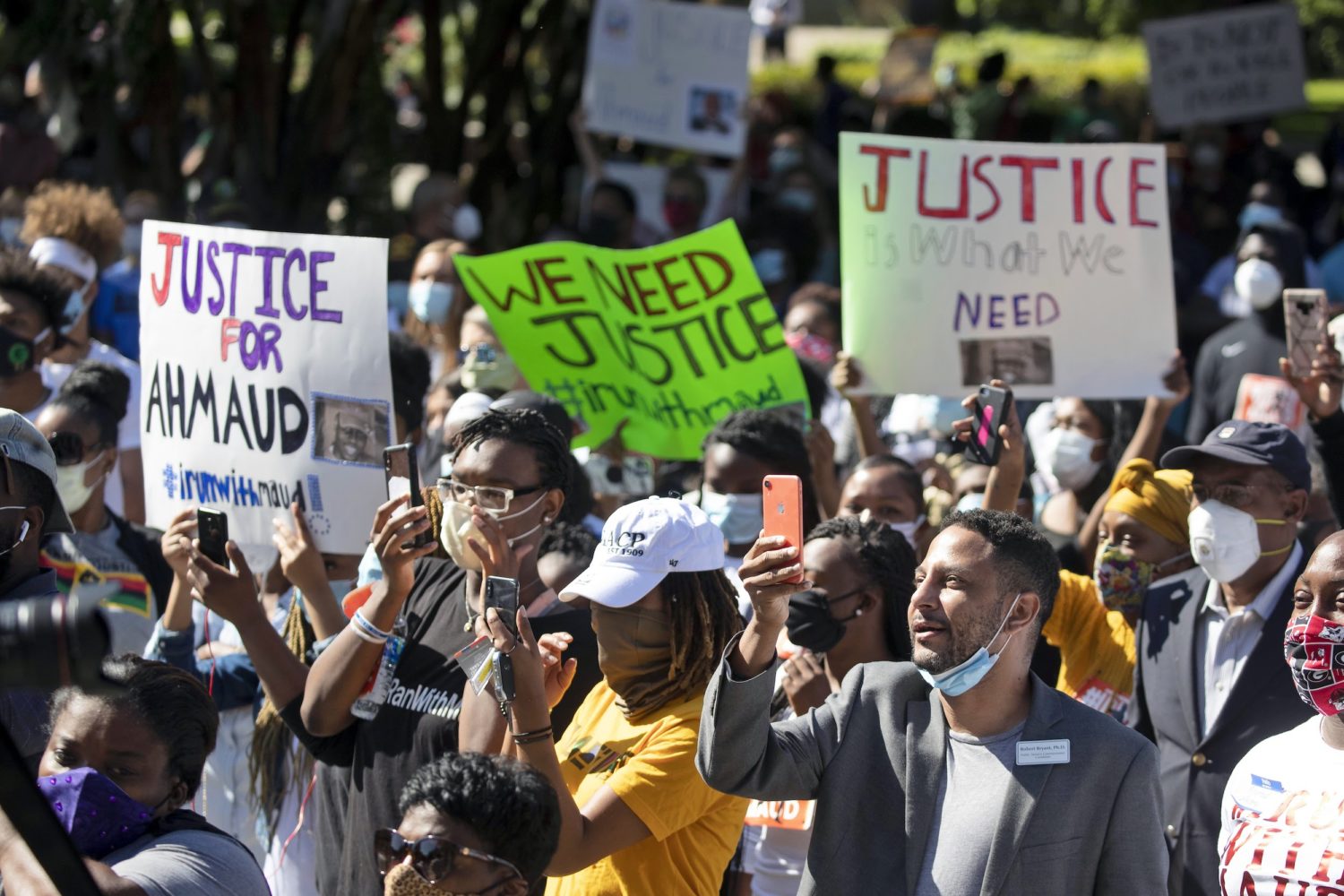The Poynter Report is our daily media newsletter. To have it delivered to your inbox Monday-Friday, click here.
Ahmaud Arbery was killed on Feb. 23, shot while jogging through a neighborhood outside of Brunswick, Georgia. Two men — a 64-year-old man and his 34-year-old son — were arrested just last week after a video of the shooting surfaced.
Even during this time of overwhelming coronavirus coverage, this story has gripped the nation — a black man minding his own business chased and gunned down in the street in broad daylight by two white men who assumed he was a criminal.
But the story has only blown up in recent days. What happened in the days and weeks immediately following the shooting? Why didn’t this story explode right after it happened?
In a compelling episode of “The Daily” — The New York Times podcast — as well as David Leonhardt’s Monday morning Times’ newsletter, we learn how the story went from being largely ignored to one of the biggest stories in the country.
More than a month after the shooting, Arbery’s cousin sent a letter to Kim Severson, a food writer for the Times, saying Arbery had been chased, shot and killed by two men. (Severson had interviewed the cousin for another story several years ago.) Severson forwarded the email to the Times’ Atlanta bureau chief, Richard Fausset, who said, “It all seemed very much worth digging into.”
Fausset asked the Times to let him travel to the Georgia coast even though most Times reporters are not traveling because of the coronavirus. Fausset’s editors, Leonhardt wrote, agreed as long as Faussett didn’t spend the night in a hotel. Despite the 10-hour round trip, that’s what Fausset did and, as he continued his reporting back in Atlanta, he started to feel as if he was “sitting on top of a bomb.”
The story Fausset wrote was published on April 26: “Two Weapons, a Chase, a Killing and No Charges.”
A big reason it took so long for this story to become a major one: where it happened. Brunswick, Georgia, isn’t quite in a news desert, but it’s close. It’s more than an hour from Jacksonville, Florida — the closest major metro area. But the Jacksonville paper really doesn’t cover Brunswick. A Jacksonville TV station — WJAX — has been covering the story. There is a paper in Brunswick — The Brunswick News, which lists a staff of nine journalists and only four news reporters.
The biggest paper in Georgia — and a well-respected news outlet — is the Atlanta Journal-Constitution. But Atlanta is more than 300 miles away from Brunswick and the AJC does not have a bureau there. The only time the AJC covers that area of the state is for breaking bad weather, such as a hurricane, or climate coverage. The AJC was on the Arbery story in April — well after the shooting, but part of the delay was because the official version of events after the shooting offered up only one side of the encounter and no charges were filed.
Maybe if it had happened in downtown Atlanta, it would have gotten more attention. But in Brunswick? With no media spotlight? With no charges filed? It almost slipped through the cracks through no fault of anyone in the media.
The AJC has since sprung into action in recent days and weeks, but it’s difficult when the coronavirus has limited reporters from moving around too much. Right now, the paper’s boots-on-the-ground reporter is actually retired AJC senior managing editor Bert Roughton Jr., who lives in Brunswick. The paper also is sharing content with one of the local TV stations.
Journal-Constitution deputy managing editor Leroy Chapman told me, “We’re not as present as I would like to be and certainly as we would be under normal circumstances — before coronavirus.”
With Brunswick out of the media spotlight, it’s no wonder the story flew under the radar for such a long time. If it hadn’t been for the Arbery family reaching out to the media, some good hustle by the New York Times and AJC and then, most of all, the video of the shooting, this story might have very well have disappeared.
Trump storms off

President Donald Trump departs after speaking about the coronavirus during a press briefing on Monday. (AP Photo/Alex Brandon)
Another White House coronavirus press conference, another nasty exchange between President Donald Trump and reporters. If you want to see how Monday’s press conference ended, check out this video of Trump becoming upset by what seemed like a legitimate question by CBS’s Weijia Jiang and then storming off after a bizarre exchange with CNN’s Kaitlan Collins. Not a good look for Trump to simply dismiss legitimate questions he doesn’t like as being nasty.
As veteran journalist Dan Rather tweeted, “There are so many fair and urgent questions for which the president has no answers. His response is slogans and attacks, even as the death toll rises, and rises, and rises.”
These contentious exchanges between Trump and reporters are becoming so common that it almost doesn’t seem newsworthy. Almost.
We need to resist the urge to normalize these exchanges. It’s not normal for a president of the United States to react this way when asked tough but fair questions about a life-and-death story that is, literally, affecting every citizen.
By the way, CNN’s Brian Stelter had a strong reaction to Trump calling out female and minority journalists.
Dangerous or daring?
If we’re tough enough and patriotic enough and want it enough then, doggone it, we can all just get back to normal. That was the message during a troubling “Fox & Friends” segment Monday morning. The show was promoting a Fox Nation special hosted by Pete Hegseth, co-host of “Fox & Friends Weekend.” In the special, Hegseth talks to military veterans about fighting the war against the coronavirus.
This was an actual exchange at the end of the segment.
“Fox & Friends” co-host Brian Kilmeade said, “Pete, just your thoughts in 20 seconds, about 78,000 are dead, we understand how many got the virus and will. I get it. But at the same time, can you get the military mindset with the masses of, take on the enemy because we have no choice — sitting on the sideline will destroy the country. How do you get the military mindset for the everyday American?”
Hegseth said, “The military mindset is a patriotic mindset. It’s what forged and founded this country. It is courage. We can be responsible, if we can follow guidelines — while also reopening. We have to reopen, guys, right now, even in some of the more difficult places, or the livelihoods of people is going to crush more folks, or as many — I’m not talking in a statistical sense — as the actual virus itself. So, I think we can muster it. We’ve done it before, guys, and I think this is another chance to rise to that challenge.”
This seems to suggest that it’s about will and courage instead of science and data. And that’s troubling.
And now see how that attitude might impact things when you read the next item …
Watch what you watch
Natalie Moore of WBEZ in Chicago (and NPR) wrote about an April study that looked at those who watched both Fox News’ Tucker Carlson and Sean Hannity. The Becker Friedman Institute for Economics at the University of Chicago studied those shows and noted that, early on, Carlson warned of the dangers of the coronavirus and how to combat it, while Hannity downplayed the virus. So the paper surveyed 1,045 Fox News viewers aged 55 and older in early April.
Moore wrote, “The paper says viewership of Hannity relative to Carlson is associated with approximately 30% more COVID-19 cases by March 14, and 21% more COVID-19 deaths by March 28.”
The authors of the study’s paper wrote, “In line with the differences in content, we find that Hannity’s viewers on average changed their behavior in response to the coronavirus five days later than other Fox News viewers, while Carlson’s viewers changed behavior three days earlier than other Fox News viewers.”
Fox News, however, disagrees with the premise that Hannity downplayed the coronavirus. A spokesperson told Moore, “As this timeline proves, Hannity has covered Covid-19 since the early days of the story. The ‘study’ almost completely ignores his coverage and repeated, specific warnings and concerns from January 27-February 26 including an early interview with (National Institute of Allergy and Infectious Diseases Director Dr. Anthony) Fauci in January. This is a reckless disregard for the truth.”
‘The Providence Journal Has Lost Its Soul’
The Providence Journal recently announced it would stop publishing its own editorials. Providence Journal executive editor Alan Rosenberg wrote:
“Our goal in news stories is always to learn, and reflect, the facts of a situation, then report them without bias. Reporters’ opinions, if they have them, have no place in our stories. But when the newspaper itself expresses opinions on those same subjects, it causes understandable confusion. Readers wonder: Can reporters really do their work without trying to reflect the views expressed in their employers’ name? Can they cast a skeptical eye on a politician their paper has endorsed, or a generous eye on one it has opposed? The answer is a definite ‘yes’ — but my email since I became executive editor shows that many just don’t buy it.”
Rosenberg wrote that the paper will still print op-eds from readers, community leaders and national voices.
However, it seems as if the Journal is afraid to have a backbone and stand up for those who need standing up for. Know who else thinks so? Howard G. Sutton II, the Journal’s publisher emeritus. In an op-ed of his own, Sutton wrote that the Journal “has lost its soul.” He added:
“The Journal’s editorials stepped on plenty of toes. But change for the better is not possible without offending someone. The loss of this voice for the people of Rhode Island is a sad chapter in the storied history of The Journal. I fear that the story is nearing its conclusion. Bang the drum slowly. Play the pipe lowly.”
Striking a deal to save jobs
The Los Angeles Times Guild has reached a deal with the Times so that the news outlet can avoid more than 80 journalists from being laid off. Here’s how it will work: From May 10 to Aug. 1, California-based journalists for the Times will work a 20% reduced weekly schedule to cut payroll by more than $2 million as the industry continues to deal with the economic crisis brought on by the coronavirus.
It sounds like a furlough, but it’s really more of a job-sharing program.
In a statement, the Guild said, “Employers who participate in work-sharing can avoid layoffs during a temporary downturn by shortening employees’ hours. Workers maintain health and retirement benefits and are allowed to collect prorated unemployment benefits to offset lost wages. When the downturn ends, hours are restored.”
The last of ‘The Last Dance’

This is a 1994 photo of Birmingham Barons’ Michael Jordan as he prepares for his first game as a professional baseball player. (AP Photo/Dave Martin)
“The Last Dance” — ESPN’s 10-part documentary about Michael Jordan and the Chicago Bulls — is winding down. Parts seven and eight aired this past Sunday and the final two episodes will air next Sunday. It has been a huge ratings and critical success for ESPN, especially at a time when there are no live sports for ESPN to air, save for Korean baseball. Sunday’s two episodes averaged 5.1 million viewers and the series, overall, has averaged 5.6 million.
This past week explored Jordan’s brief venture into baseball during his first retirement from basketball. For more about that part of Jordan’s life, check out this insightful piece from Sports Illustrated baseball writer Tom Verducci. In the piece, Verducci looks at the perceptions and misconceptions of Jordan’s time in the minor leagues and whether or not he ever would have made it to the majors.
Also, it’s behind a paywall, but The Athletic’s Richard Deitsch writes about the documentary’s modern-day interviews with Jordan that are the backbone of the film.
Biden on GMA
Presumptive Democratic presidential nominee Joe Biden is scheduled to be interviewed on ABC’s “Good Morning America” this morning by George Stephanopoulos. Biden addressed the sexual assault allegations against him by former staffer Tara Reade during an interview on “Morning Joe” two weeks ago. But this will be his first on-air interview since Reade spoke at length about her allegations in an interview last week with Megyn Kelly.
Investigation leads to troubling report
I wanted to call your attention to this important work and make it separate from the daily “Hot Type” section below both because of the seriousness of the report and who produced it.
The headline is deeply disturbing. “Documents: Federal agents had sex with trafficking victims.”
The story was published by the Associated Press and, to quote the bottom of the story: “This project was produced by the Howard Center for Investigative Journalism at Arizona State University’s Walter Cronkite School of Journalism and Mass Communication, an initiative of the Scripps Howard Foundation in honor of the late news industry executive and pioneer Roy W. Howard. It was reported by Mackenzie Shuman, Molly Duerig, Grace Oldham, Rachel Gold, Meagan Sainz-Pasley, Mythili Gubbi, Alejandra Gamez, Beno Thomas and James Paidoussis.”
Hot type
- As the country struggles with the timing of when to “reopen,” sports remains up in the air. In a smart column, USA Today columnist Christine Brennan writes that the return of sports will not — and should not — be up to those who actually run sports.
- The great Jerry Stiller has died. He was 92. The New York Times’ Peter Keepnews with the obit.
- Fox News’ Laura Ingraham says “there’s no real scientific basis” for social distancing. Poynter’s PolitiFact and Bill McCarthy report that she’s wrong.
- Foo Fighters’ Dave Grohl, in The Atlantic, writes “The Day the Live Concert Returns.”
Have feedback or a tip? Email Poynter senior media writer Tom Jones at tjones@poynter.org.
More resources for journalists
- Sign up to receive our new Coronavirus Facts newsletter — PolitiFact and MediaWise
- On Poynt Live training: May 21 at 2 p.m. Eastern — Niche newsletters: Bouncing Back From the COVID-19 Engagement Slump — Poynter
- Covering Coronavirus: Can We Pass the Test? May 13 at 1 p.m. Eastern — Center for Health Journalism, USC Annenberg
- Reporting on Coronavirus: Ethical Questions Around Covering Coronavirus — May 14 at 11 a.m Eastern — First Draft
Want to get this briefing in your inbox? Sign up here.
Follow us on Twitter and on Facebook.
Correction: Jerry Stiller was 92 when he died, not 91. We regret the error.








